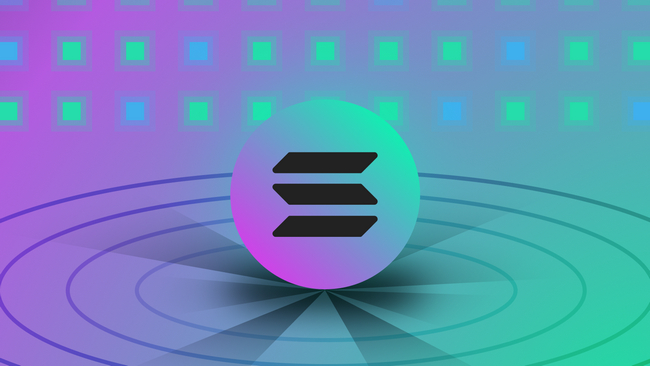-
 Bitcoin
Bitcoin $104,224.1974
1.01% -
 Ethereum
Ethereum $2,560.3829
9.12% -
 Tether USDt
Tether USDt $1.0001
0.02% -
 XRP
XRP $2.4174
1.83% -
 BNB
BNB $663.5043
-1.34% -
 Solana
Solana $177.4403
3.04% -
 USDC
USDC $1.0000
0.01% -
 Dogecoin
Dogecoin $0.2429
16.33% -
 Cardano
Cardano $0.8208
4.26% -
 TRON
TRON $0.2649
0.31% -
 Sui
Sui $4.0677
1.34% -
 Chainlink
Chainlink $17.0611
5.71% -
 Avalanche
Avalanche $25.5486
8.39% -
 Stellar
Stellar $0.3148
4.71% -
 Shiba Inu
Shiba Inu $0.0...01654
8.84% -
 Hedera
Hedera $0.2151
5.77% -
 Toncoin
Toncoin $3.5072
5.98% -
 Hyperliquid
Hyperliquid $25.8795
4.49% -
 Bitcoin Cash
Bitcoin Cash $428.3413
2.84% -
 Polkadot
Polkadot $5.1326
3.07% -
 Litecoin
Litecoin $104.9330
0.87% -
 UNUS SED LEO
UNUS SED LEO $8.2670
-4.90% -
 Monero
Monero $326.7171
5.26% -
 Pi
Pi $0.8475
15.23% -
 Bitget Token
Bitget Token $4.9279
7.16% -
 Pepe
Pepe $0.0...01320
5.67% -
 Dai
Dai $0.9999
-0.02% -
 Ethena USDe
Ethena USDe $1.0002
0.02% -
 Uniswap
Uniswap $7.3533
13.01% -
 Bittensor
Bittensor $461.6048
6.94%
how is solana centralized
Solana's centralized stake distribution, with the top 10 validators holding 60% of the total stake, raises concerns about potential dominance by a few large entities.
Nov 06, 2024 at 03:33 am

Centralization in the Blockchain World: A Deep Dive into Solana
Introduction
Solana, a burgeoning blockchain platform, has garnered significant attention for its high speed and low transaction costs. However, concerns about its centralization have cast a shadow over its reputation. This comprehensive article aims to address these concerns, providing an in-depth analysis of Solana's centralization level.
Understanding Centralization in Blockchains
Centralization refers to the concentration of power and control within a small group of entities in a distributed system. In the blockchain context, centralization occurs when a few nodes or validators have disproportionate influence over the network's operations and decision-making.
Solana's Architecture: A Potential for Centralization
Solana employs a unique architecture to achieve its high performance. It utilizes a Proof-of-History (PoH) consensus mechanism, which relies on validators generating a sequential log of events. This log is then used by the network to timestamp transactions, greatly reducing the verification time.
However, Solana's PoH mechanism introduces a potential for centralization. The validators responsible for generating the PoH log are selected based on their stake in the network. This means that entities with larger stakes have a greater influence on the log's creation, potentially leading to collusion or control.
Stake Distribution: A Measure of Solana's Centralization
To assess Solana's centralization level, we examine the distribution of stake among its validators. As of May 2023, the top 10 validators hold approximately 60% of the total stake, while the top 20 validators control over 75%. This concentrated stake distribution raises concerns about potential dominance by a few large entities.
Role of the Solana Foundation: A Centralized Entity
The Solana Foundation, a non-profit organization, plays a significant role in the Solana ecosystem. It is responsible for developing and maintaining the Solana software, coordinating validator operations, and promoting the network's adoption.
The Foundation's centralized power raises concerns about its influence over the network's governance and decision-making. Critics argue that the Foundation has the ability to exert undue influence on the network's development and direction, potentially compromising its decentralization.
Solana's Validator Selection Process: A Source of Criticism
Solana's validator selection process has been criticized for its lack of transparency and accountability. Validators are chosen based on their performance and stake, but the specific criteria used for selection are not publicly disclosed. This opaqueness raises concerns about potential bias or favoritism in the selection process.
Lack of On-Chain Governance: A Barrier to Decentralization
Solana currently lacks a robust on-chain governance system. Major network decisions are made by the Solana Foundation and its partners. This centralized decision-making process limits the ability of the broader Solana community to participate in shaping the network's future direction.
Centralized Features and Solutions Considered by Solana
Solana has acknowledged the concerns about centralization and has proposed several measures to address them. These include introducing new staking mechanisms, increasing validator diversity, and implementing on-chain governance models.
Conclusion
Solana's architecture, stake distribution, centralized entities, and validator selection process raise potential concerns about its level of decentralization. While the network is exploring solutions to mitigate these concerns, it is important for users, developers, and enthusiasts to critically evaluate the platform's centralization risks and their implications for the blockchain ecosystem.
Disclaimer:info@kdj.com
The information provided is not trading advice. kdj.com does not assume any responsibility for any investments made based on the information provided in this article. Cryptocurrencies are highly volatile and it is highly recommended that you invest with caution after thorough research!
If you believe that the content used on this website infringes your copyright, please contact us immediately (info@kdj.com) and we will delete it promptly.
- Ethereum (ETH) price traded at around $2,380 after going past critical resistance
- 2025-05-11 11:20:14
- BNB Price Prediction for 2025 and Beyond
- 2025-05-11 11:20:14
- XRP Is Rising from a Lower Level, Exhibiting a Significant Spike in Price
- 2025-05-11 11:15:13
- Ethereum (ETH) Price Traded at Around $2380 After Breaking Past Critical Resistance
- 2025-05-11 11:15:13
- The altcoin (virtual assets excluding Bitcoin) market is skyrocketing.
- 2025-05-11 11:10:13
- From May 5 to 9, the virtual asset market recorded a strong upward trend
- 2025-05-11 11:10:13
Related knowledge

What is Ethereum’s Slashing mechanism and how to punish malicious behavior?
Feb 20,2025 at 03:08am
Key PointsOverview of slashingDifferent types of slashing in EthereumIncentives and consequences of slashingIdentifying and reporting slashed validatorsOngoing discussions and potential improvementsEthereum's Slashing Mechanism: Punishing Malicious BehaviorEthereum's slashing mechanism is an essential tool for ensuring network security and punishing mal...

What is the verifier node of Ethereum and how to become a verifier?
Feb 19,2025 at 06:00pm
The Verifier Node of Ethereum: A Comprehensive GuideKey Points:What is a Verifier Node?How to Become a Verifier NodeResponsibilities and Rewards of a Verifier NodeMinimum Requirements for Becoming a Verifier NodePotential Difficulties in Running a Verifier Node1. What is a Verifier Node?A Verifier Node is an independent entity on the Ethereum network th...

What is Ethereum’s staking, and how to participate and earn money?
Feb 19,2025 at 04:37pm
Key Points:Understanding Ethereum's Staking MechanismSteps to Participate in StakingBenefits and Rewards of StakingSecurity and Risk ConsiderationsTechnical Requirements and Hardware OptionsPotential Challenges and Troubleshooting TipsFAQs on Ethereum StakingWhat is Ethereum's Staking?Proof-of-Stake (PoS) is a consensus mechanism used in blockchain netw...

What is Ethereum’s DAO (Decentralized Autonomous Organization) and how does it work?
Feb 20,2025 at 03:12am
Key PointsDefinition and Structure of a DAOGovernance and Decision-Making in DAOsBenefits and Use Cases of DAOsChallenges and Limitations of DAOsWhat is Ethereum's DAO (Decentralized Autonomous Organization) and How Does It Work?Definition and Structure of a DAOA Decentralized Autonomous Organization (DAO) is an innovative governance and management fram...

What is Ethereum's multi-signature wallet and how to improve security?
Feb 20,2025 at 02:18pm
Key Points:Understanding the Concept of a Multi-Signature WalletBenefits and Drawbacks of Multisig WalletsRequirements for Setting Up a Multisig WalletStep-by-Step Guide to Generating a Multisig WalletImplementing Strategies for Enhanced Security1. Understanding the Concept of a Multi-Signature WalletA multi-signature (multisig) wallet in the Ethereum e...

What is Ethereum's oracle and how to provide data for smart contracts?
Feb 21,2025 at 01:30am
Key Points:Understanding the concept of oracles in EthereumExploring different types of oraclesDetailed guide on how to provide data for smart contractsAddressing potential challenges and considerationsWhat is Ethereum's Oracle?Oracles are crucial components in the Ethereum ecosystem, enabling smart contracts to access real-world data and off-chain even...

What is Ethereum’s Slashing mechanism and how to punish malicious behavior?
Feb 20,2025 at 03:08am
Key PointsOverview of slashingDifferent types of slashing in EthereumIncentives and consequences of slashingIdentifying and reporting slashed validatorsOngoing discussions and potential improvementsEthereum's Slashing Mechanism: Punishing Malicious BehaviorEthereum's slashing mechanism is an essential tool for ensuring network security and punishing mal...

What is the verifier node of Ethereum and how to become a verifier?
Feb 19,2025 at 06:00pm
The Verifier Node of Ethereum: A Comprehensive GuideKey Points:What is a Verifier Node?How to Become a Verifier NodeResponsibilities and Rewards of a Verifier NodeMinimum Requirements for Becoming a Verifier NodePotential Difficulties in Running a Verifier Node1. What is a Verifier Node?A Verifier Node is an independent entity on the Ethereum network th...

What is Ethereum’s staking, and how to participate and earn money?
Feb 19,2025 at 04:37pm
Key Points:Understanding Ethereum's Staking MechanismSteps to Participate in StakingBenefits and Rewards of StakingSecurity and Risk ConsiderationsTechnical Requirements and Hardware OptionsPotential Challenges and Troubleshooting TipsFAQs on Ethereum StakingWhat is Ethereum's Staking?Proof-of-Stake (PoS) is a consensus mechanism used in blockchain netw...

What is Ethereum’s DAO (Decentralized Autonomous Organization) and how does it work?
Feb 20,2025 at 03:12am
Key PointsDefinition and Structure of a DAOGovernance and Decision-Making in DAOsBenefits and Use Cases of DAOsChallenges and Limitations of DAOsWhat is Ethereum's DAO (Decentralized Autonomous Organization) and How Does It Work?Definition and Structure of a DAOA Decentralized Autonomous Organization (DAO) is an innovative governance and management fram...

What is Ethereum's multi-signature wallet and how to improve security?
Feb 20,2025 at 02:18pm
Key Points:Understanding the Concept of a Multi-Signature WalletBenefits and Drawbacks of Multisig WalletsRequirements for Setting Up a Multisig WalletStep-by-Step Guide to Generating a Multisig WalletImplementing Strategies for Enhanced Security1. Understanding the Concept of a Multi-Signature WalletA multi-signature (multisig) wallet in the Ethereum e...

What is Ethereum's oracle and how to provide data for smart contracts?
Feb 21,2025 at 01:30am
Key Points:Understanding the concept of oracles in EthereumExploring different types of oraclesDetailed guide on how to provide data for smart contractsAddressing potential challenges and considerationsWhat is Ethereum's Oracle?Oracles are crucial components in the Ethereum ecosystem, enabling smart contracts to access real-world data and off-chain even...
See all articles






















































































